SFC Wayne Michelson sat still as death. He was point man for a six-man special forces patrol counting traffic along the Ho Chi Minh Trail. His fellow SF operator and four Montagnards were the only friendlies for 75 klicks. This was their third day downrange, and they had thus far been lucky. However, it seemed that was about to change.
He heard the NVA before he saw them. Now they were close enough to smell. This was their world, and they had no suspicion that there could be Americans this deep into Laos.
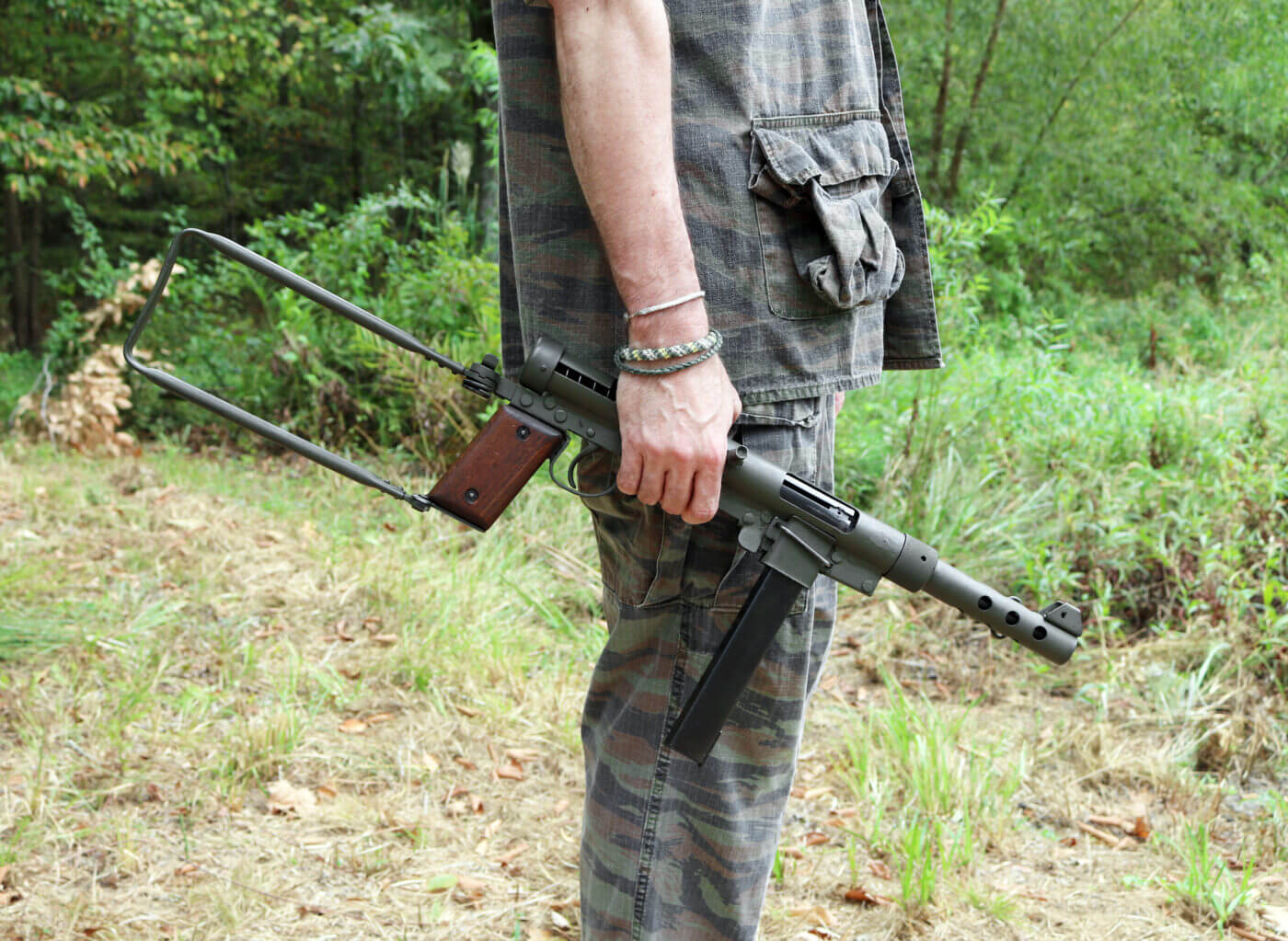
Michelson wanted desperately for the patrol to move on past. However, the last man in their column stopped to answer the call of nature. Now he stood urinating into the brush not ten feet from where SFC Michelson crouched.
The moon shone brightly enough to cut through the dank Asian jungle. The NVA soldier, his AK rifle slung, was putting his black pajama bottoms back in order when their eyes met. For a pregnant moment all Michelson saw was confusion. The unconcerned banter of the rest of the NVA patrol was diminishing around the corner. The NVA trooper then opened his mouth to shout.
Michelson raised his sound-suppressed Swedish K submachine gun and snapped out a quick four-shot burst. All four 124-gr. ball rounds struck the small-statured communist soldier in the chest, bowling him over as though struck by a sledge. The hefty suppressor on the Swedish subgun kept the report in check, while the dank, thick jungle quieted things yet further. In moments Michelson had the man’s lifeless body far enough into the jungle to be tough to find in the dark.
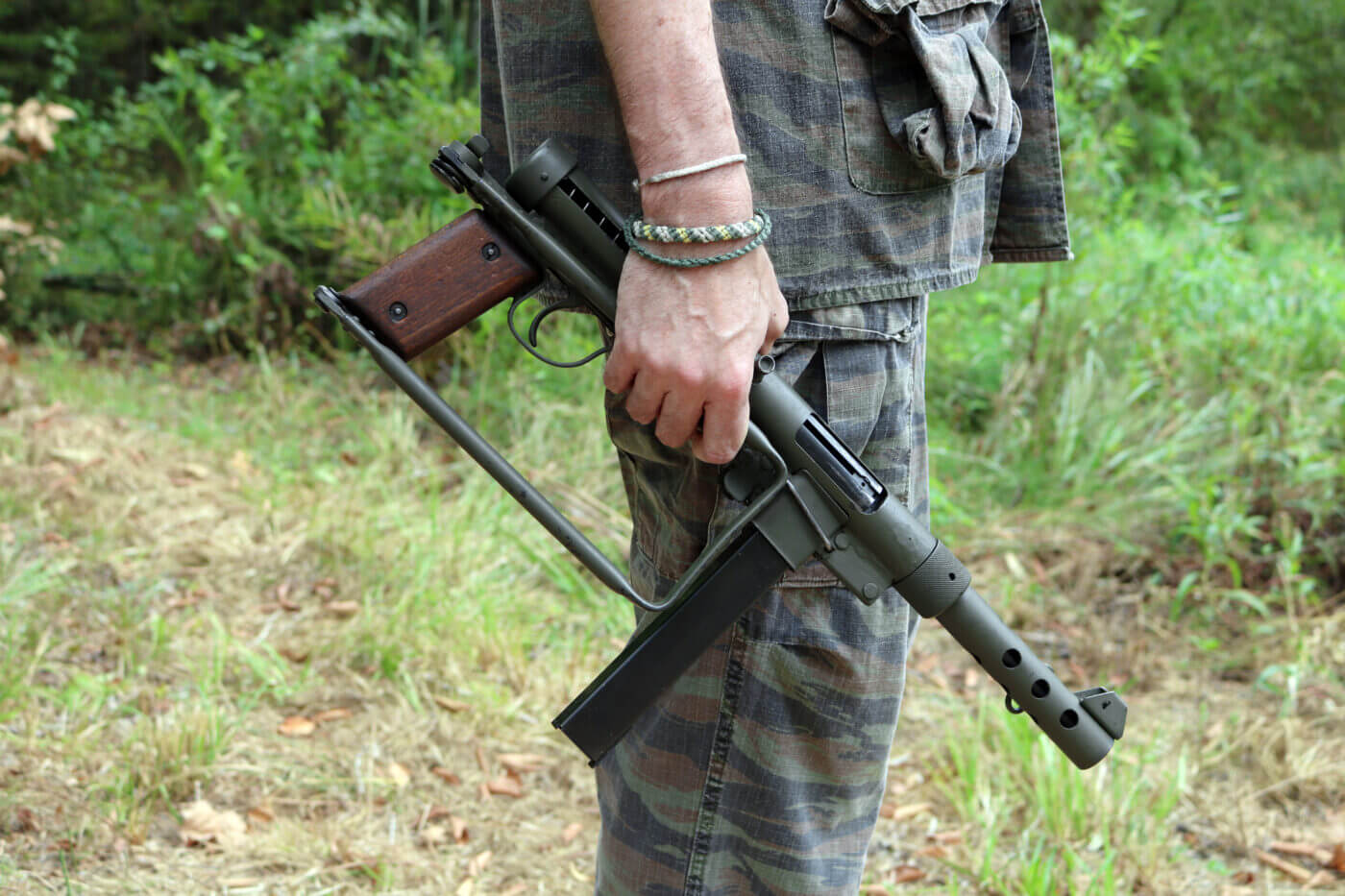
They had indeed been lucky, of that there was no doubt, but this NVA soldier would soon be missed. Michelson accounted for his men and struck out at a run for their primary PZ. His American comrade was already on his PRC-25 radio. The Huey slick would meet them at the prearranged pick-up zone at first light. That was two hours. Lord willing it would take the NVA longer than that to figure out what happened and track them down. Had it not been for his weird Swedish subgun, they’d all six be dead.
The Swedish K
The Kulsprutepistol m/45 aka Carl Gustav M/45 was a conventional submachine gun with very unconventional origins. The gun saw limited use with American special forces and Navy SEALs during the Vietnam War. In U.S. Military service, the m/45 was called the Swedish K or “K Rifle.”
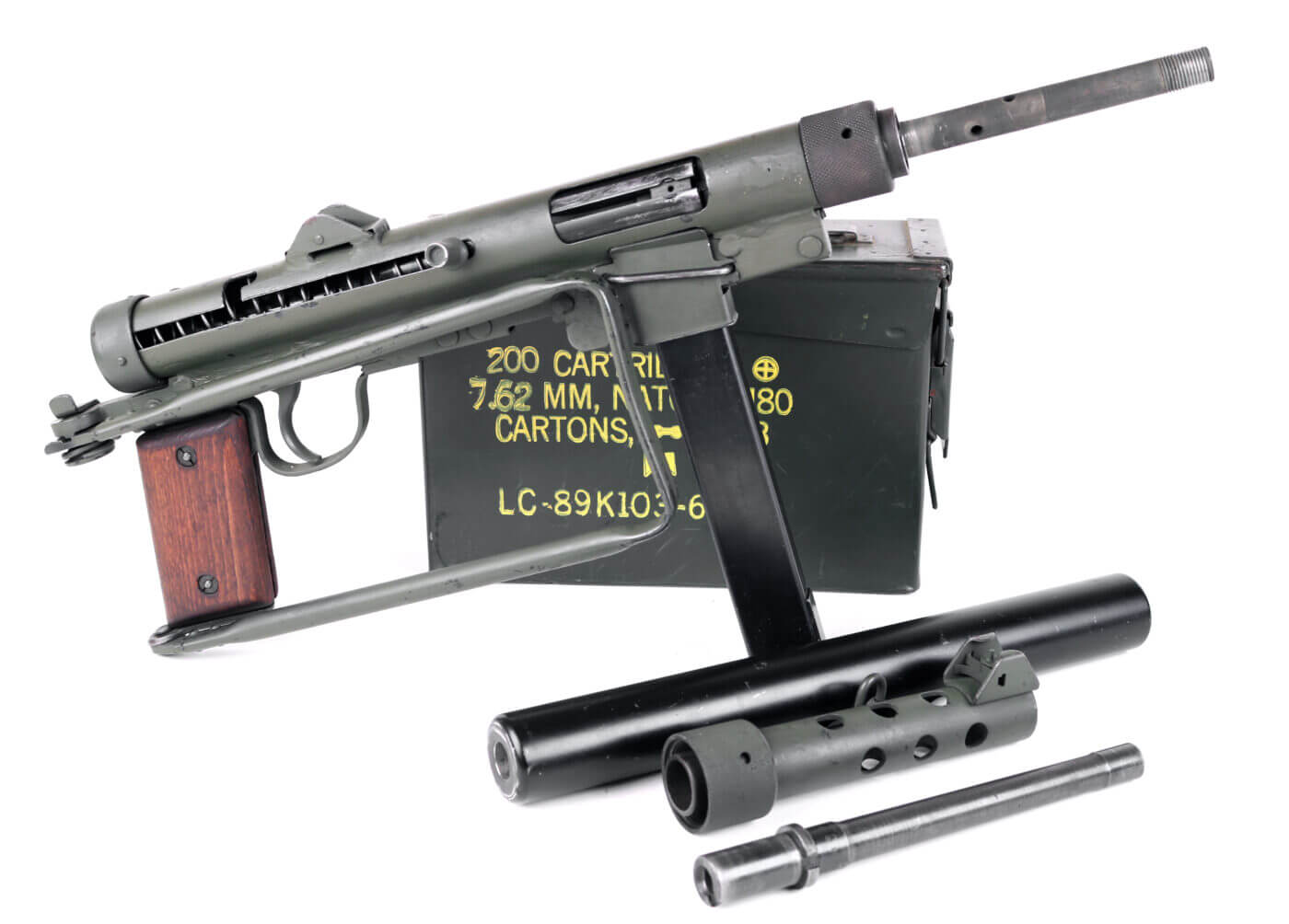
Sweden strove mightily to remain neutral throughout World War II, while the rest of the planet burned. Desperate to eschew involvement, tiny little Sweden had to remain as prickly as possible. To avoid the appearance of partiality, the Swedes frequently had to develop their own weaponry.
Gunnar Johnsson took elements from the most common subguns in service at the time and crafted the Swedish K as a hybrid. The Sten, MP40, M3 “Grease Gun”, and PPSh were all built around a pressed or drawn steel receiver. This kept production costs low while still yielding a rugged chassis. Johnsson’s similar tubular steel receivers could be pressed out in bulk by semi-skilled workers.
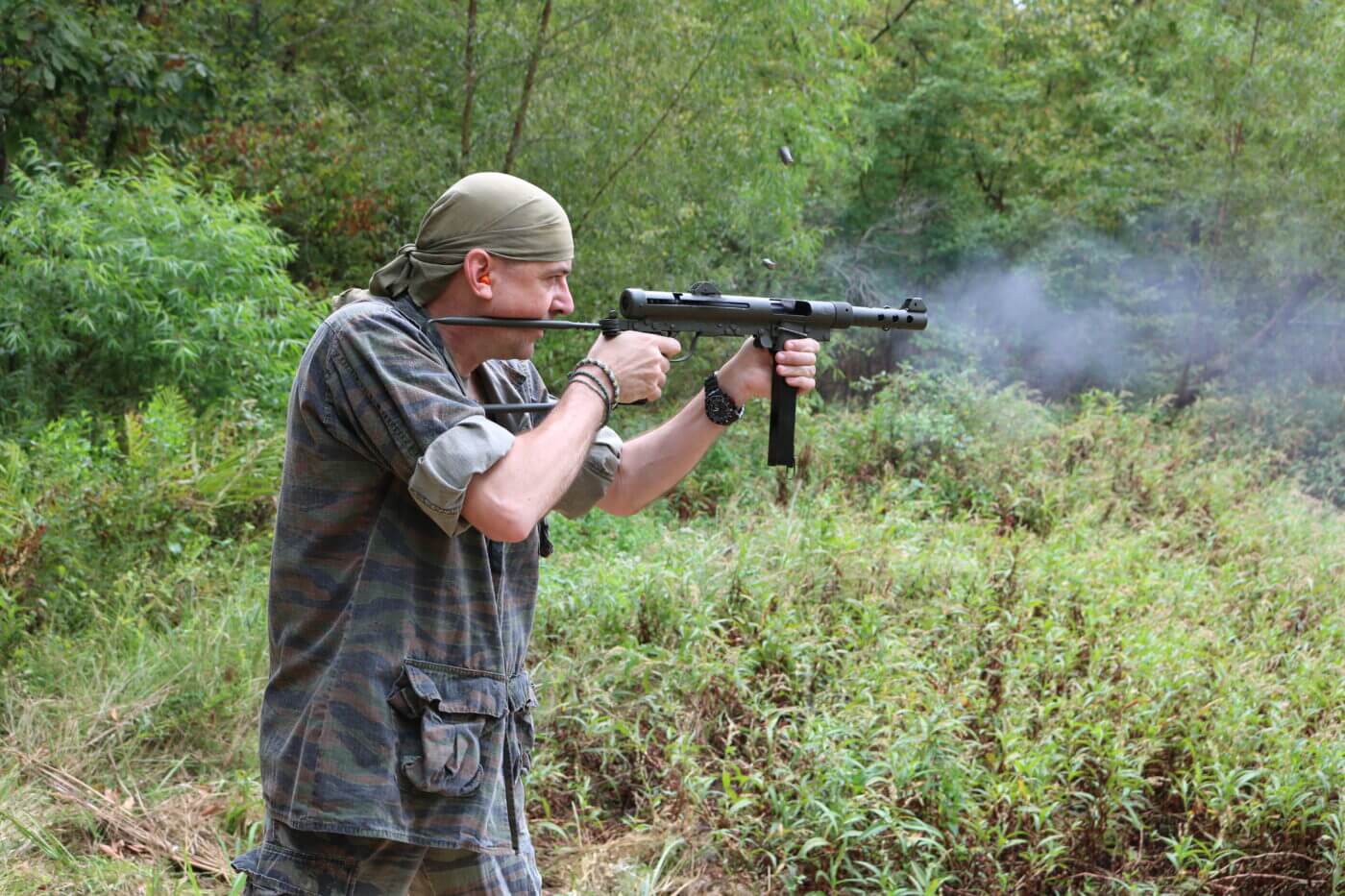
The 36-round box magazine for the Swedish K is one of the best ever produced. A trapezoidal cross section keeps the rounds oriented properly, while the double-stack, double-feed design means easy loading without a special tool. The magazine release is a thumb-activated lever oriented behind the magwell.
All involved respected the inherent firepower of the Russian PPSh equipped with its 71-round drum. Johnsson therefore designed his gun with a removable sheet steel magwell that would accommodate a drum, or a 50-round “coffin” mag as well. Thusly equipped, the Swedish K does indeed pack a lot of bullets. However, with the drum in place the gun maneuvers like Jabba the Hutt navigating a corn maze.
Details
The Swedish K is of thoroughly conventional design. The gun is full-auto-only and fires from an open bolt. It operates via advanced primer ignition, meaning the firing pin is nothing more than a dimple machined into the bolt face. The gun’s sole safety is a slot cut into the receiver to hold the bolt to the rear.
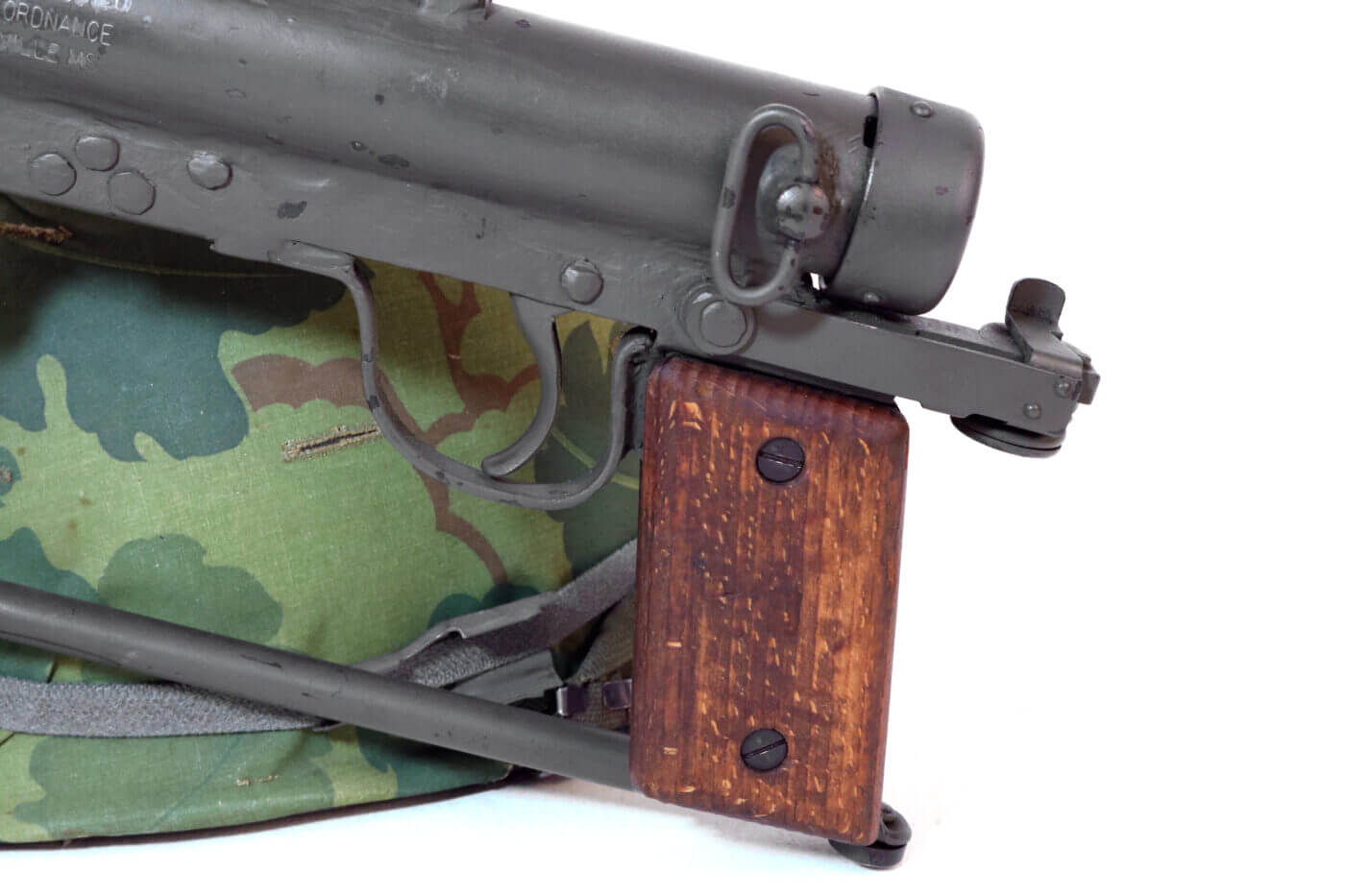
For some reason the pistol grip on the K is absolutely enormous. I have big long monkey fingers, and I can barely reach around the thing. Very basic wooden slab grips keep the bare steel comfortable. The front sight is adjustable for windage, while the rear sight is flip adjustable for elevation. Both are heavily fenced.
The side-folding stock is both rigid and effective. A safety lock ensures that the stock will not collapse unexpectedly. To deploy the stock, just give it a snatch. To collapse it you press the release catch and then fold it to the right.
The barrel and its shroud are easily removed without tools. A sound-suppressed barrel assembly can therefore be easily exchanged for the standard sort. Swedish K suppressors include a ported barrel that drops standard velocity supersonic 9mm rounds down to the subsonic range, substantially decreasing their report.
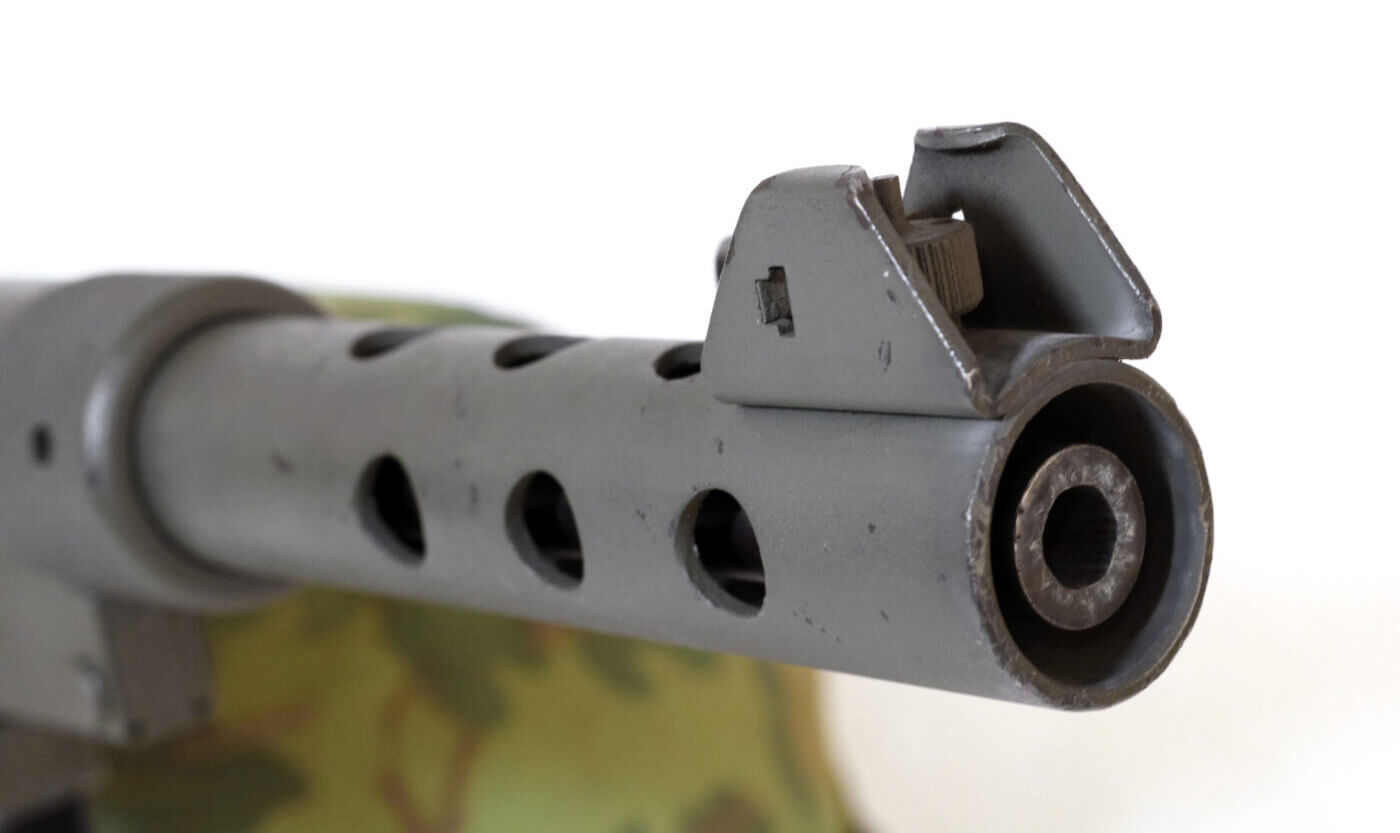
The bolt on the Swedish K is absolutely massive, and its associated travel fairly prodigious. This results in a very pleasant rate of fire of around 550-600 rpm. I have read that you could slip a c-cell battery into the back of the receiver and substantially increase the firing rate. I’d personally sooner not try that myself.
The Rest of the Story
American special operators coveted the Swedish K in Vietnam for its unswerving reliability. At a time when the M16 was dogged with problems, the Swedish K could be relied upon to run under most any circumstances. The gun’s ample tolerances also gave it a desirable over-the-beach capability for Navy SEALs just emerging from the surf or muck.
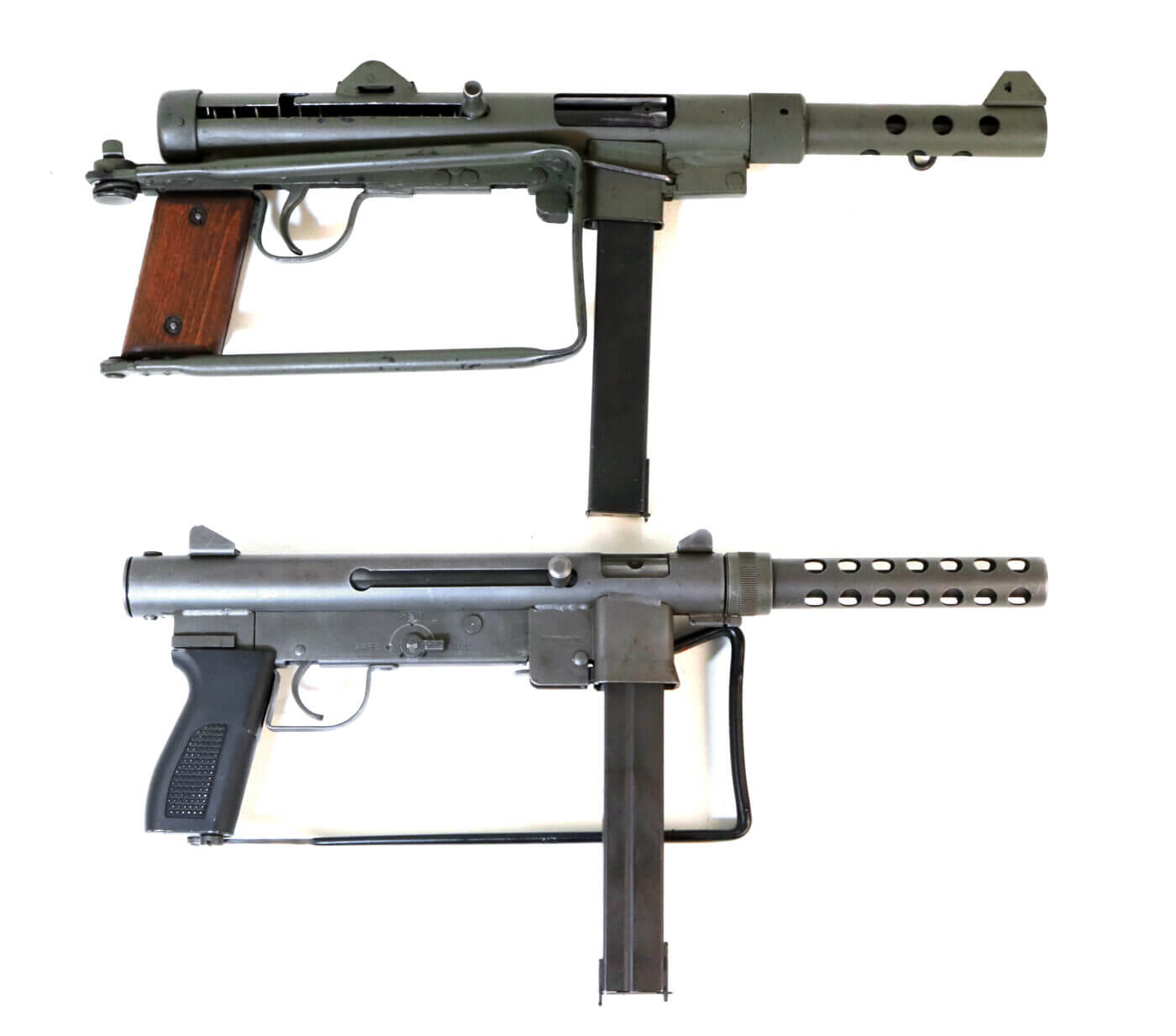
The Swedes instigated a weapons embargo against the United States in 1966 to protest the war in Vietnam. In response, the U.S. Military reached out to American industry for a replacement. The result was the M76, a similar but still substantially dissimilar weapon. Most everything about the M76 is a little bit sleeker than its Swedish forebear. However, in my experience the M76 is not nearly so robust.
In the end none of that mattered. The Swedish K was manufactured in Egypt under license as the Port Said and saw some distribution to terrorist ne’er-do-wells around the globe. First World militaries, however, soon became besotted with stubby rifle-caliber carbines and lost their enthusiasm for subguns shooting pistol bullets. Those who ran the K Rifle in Vietnam, however, absolutely loved the thing.